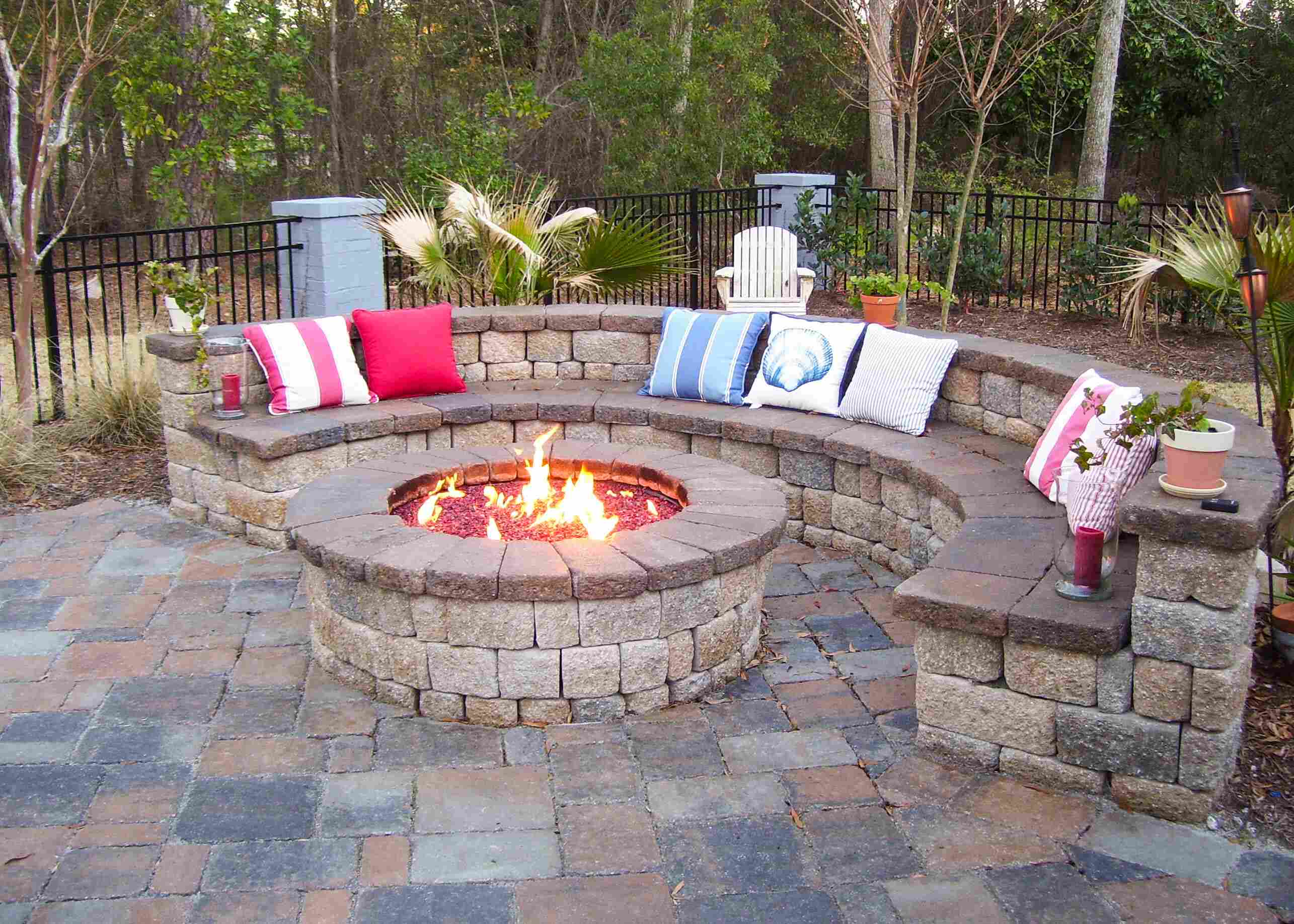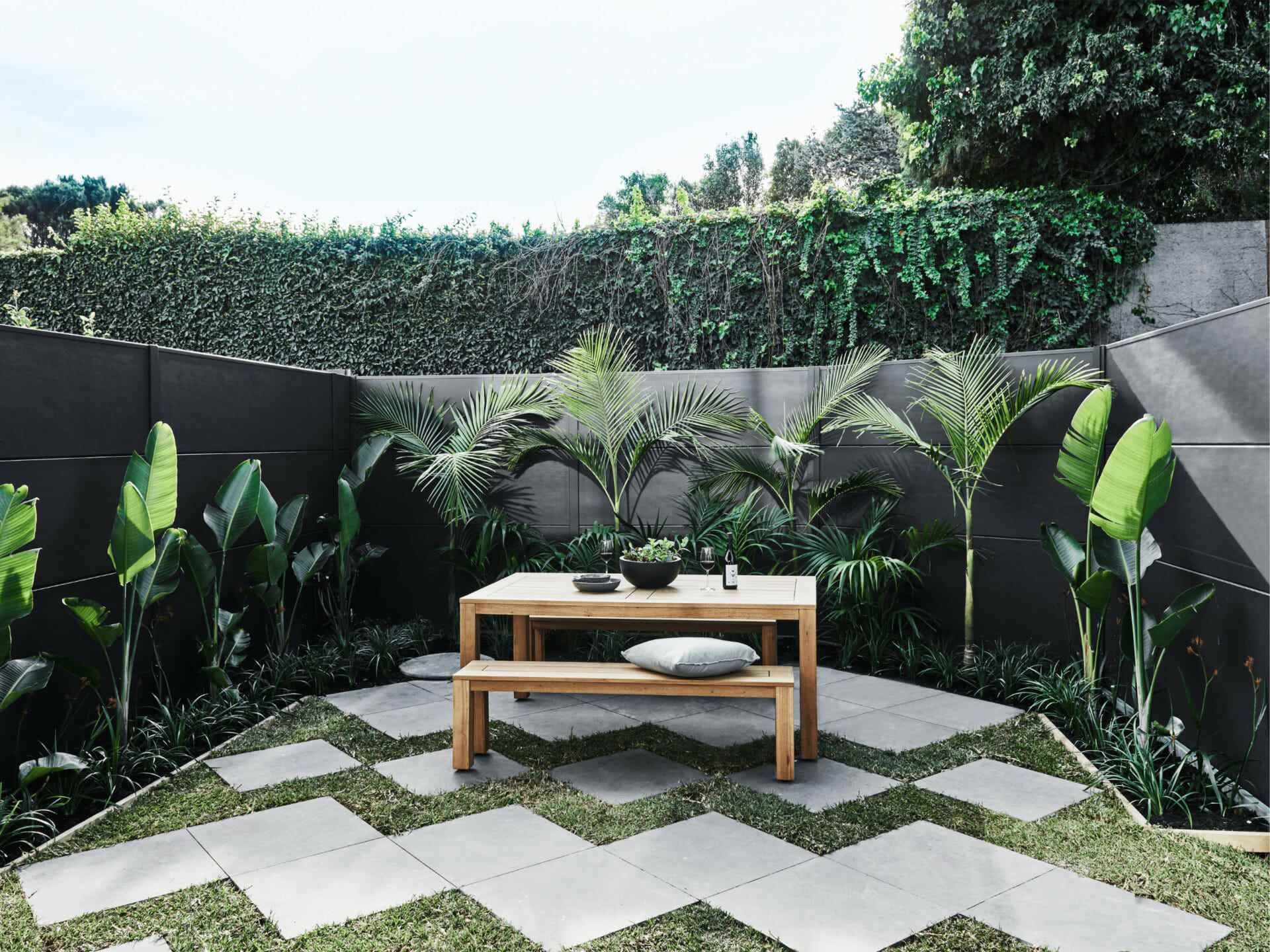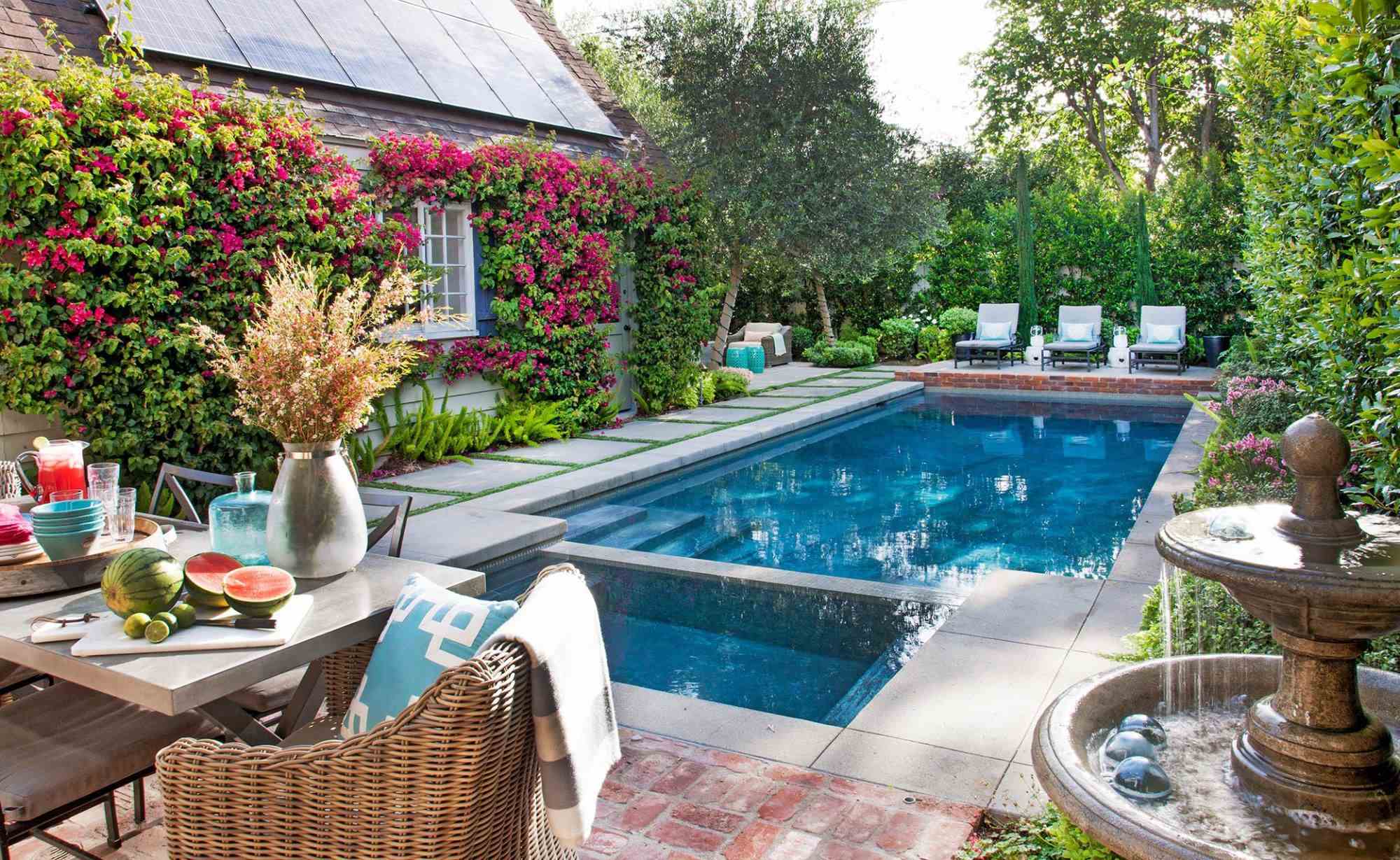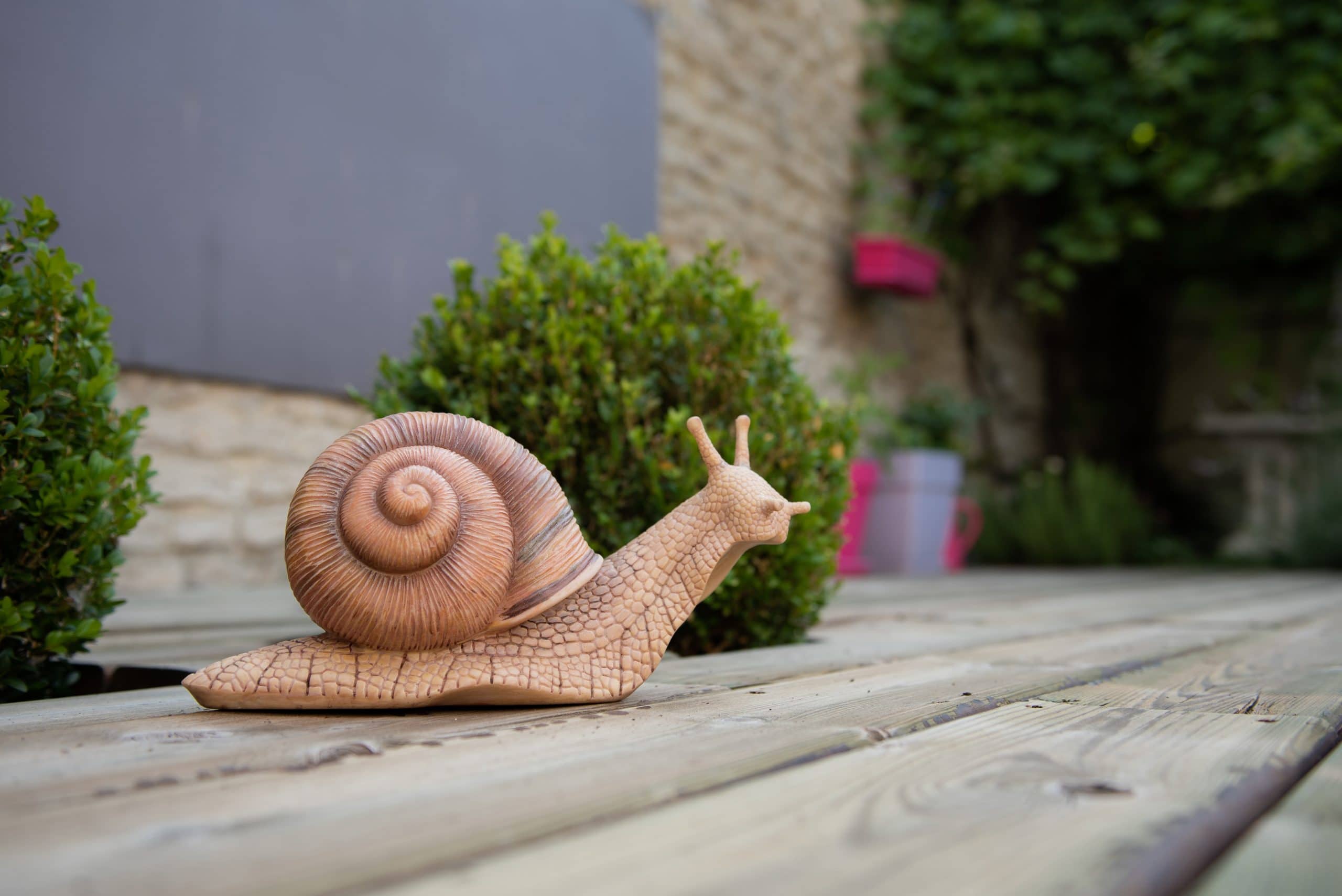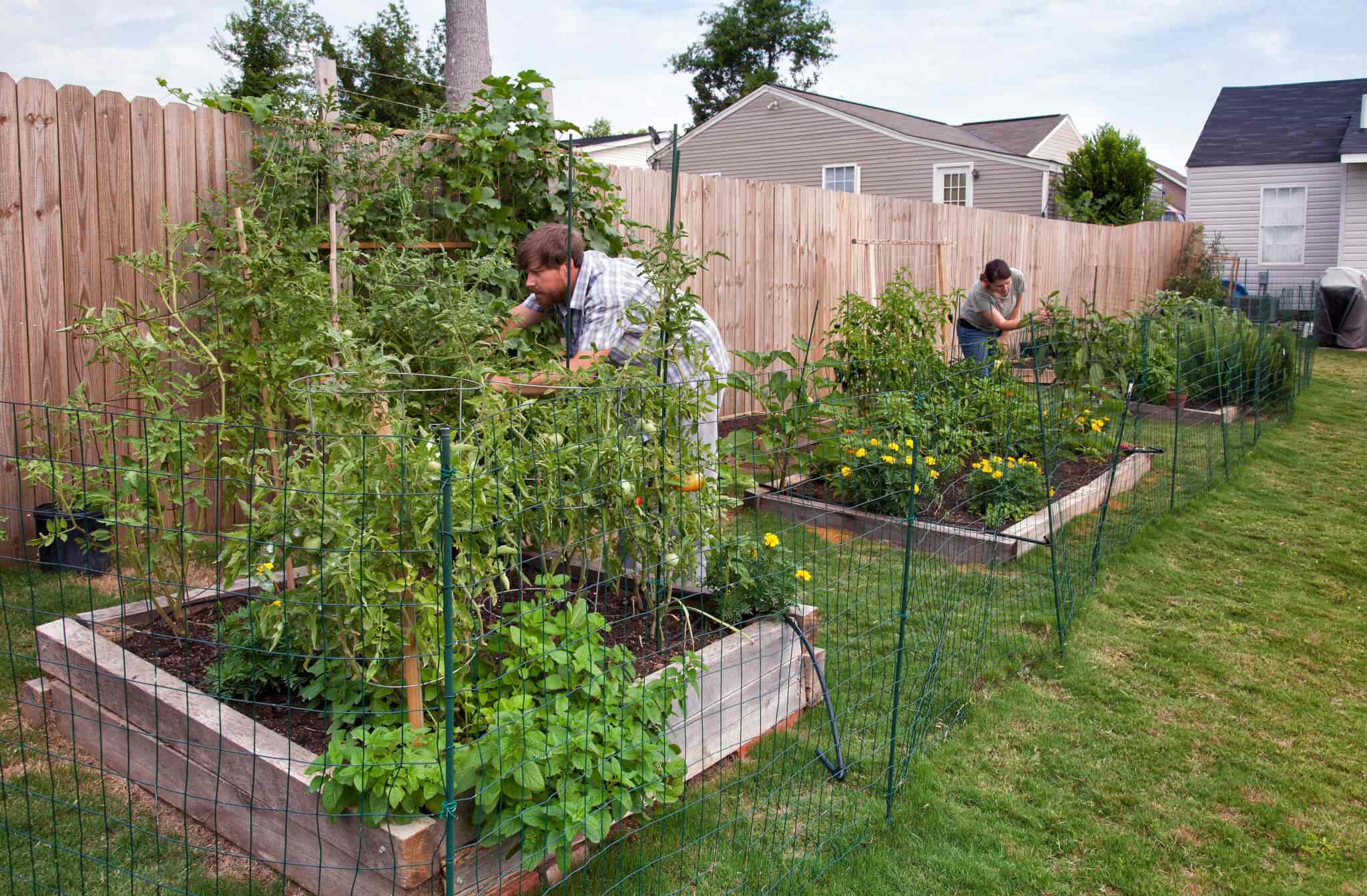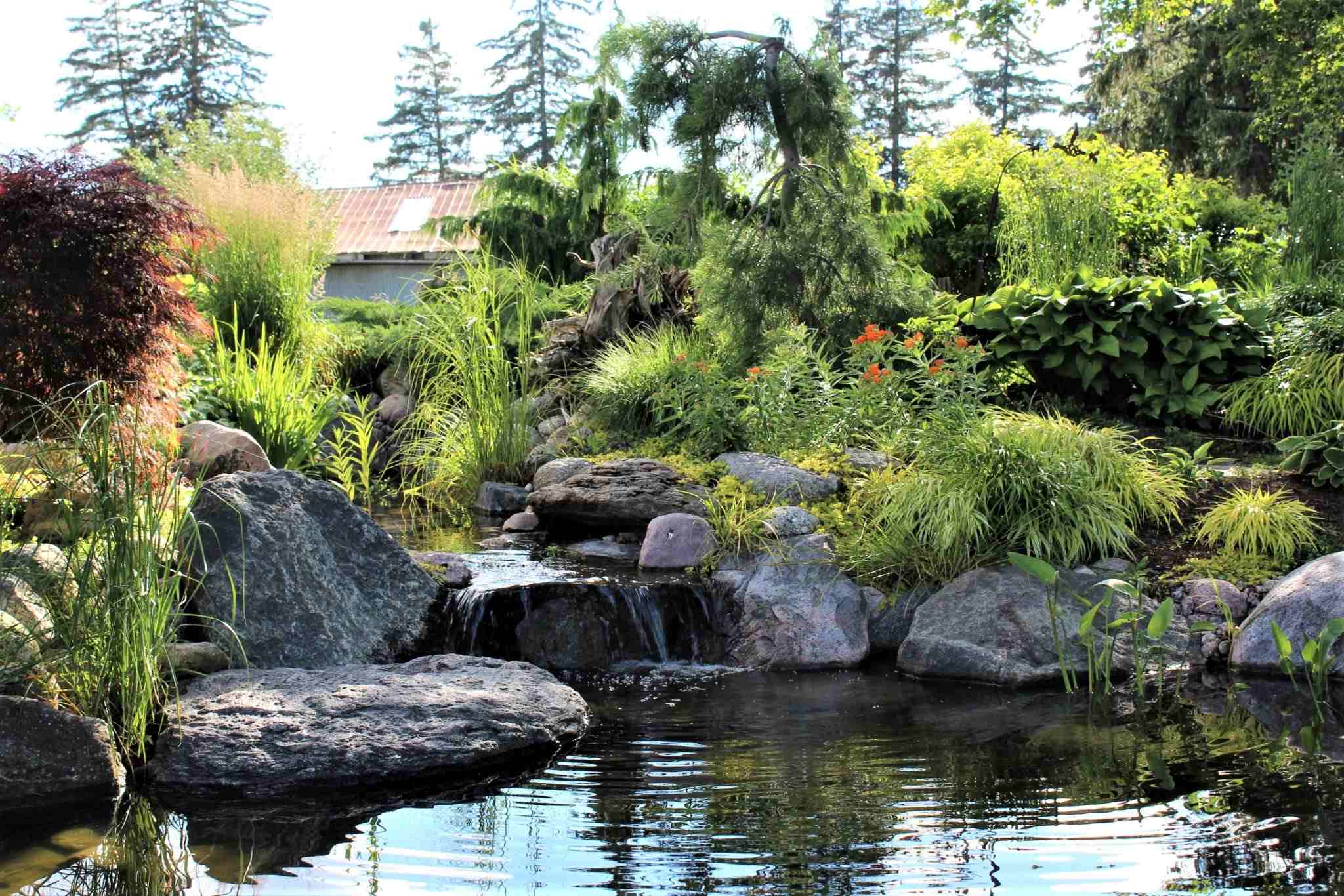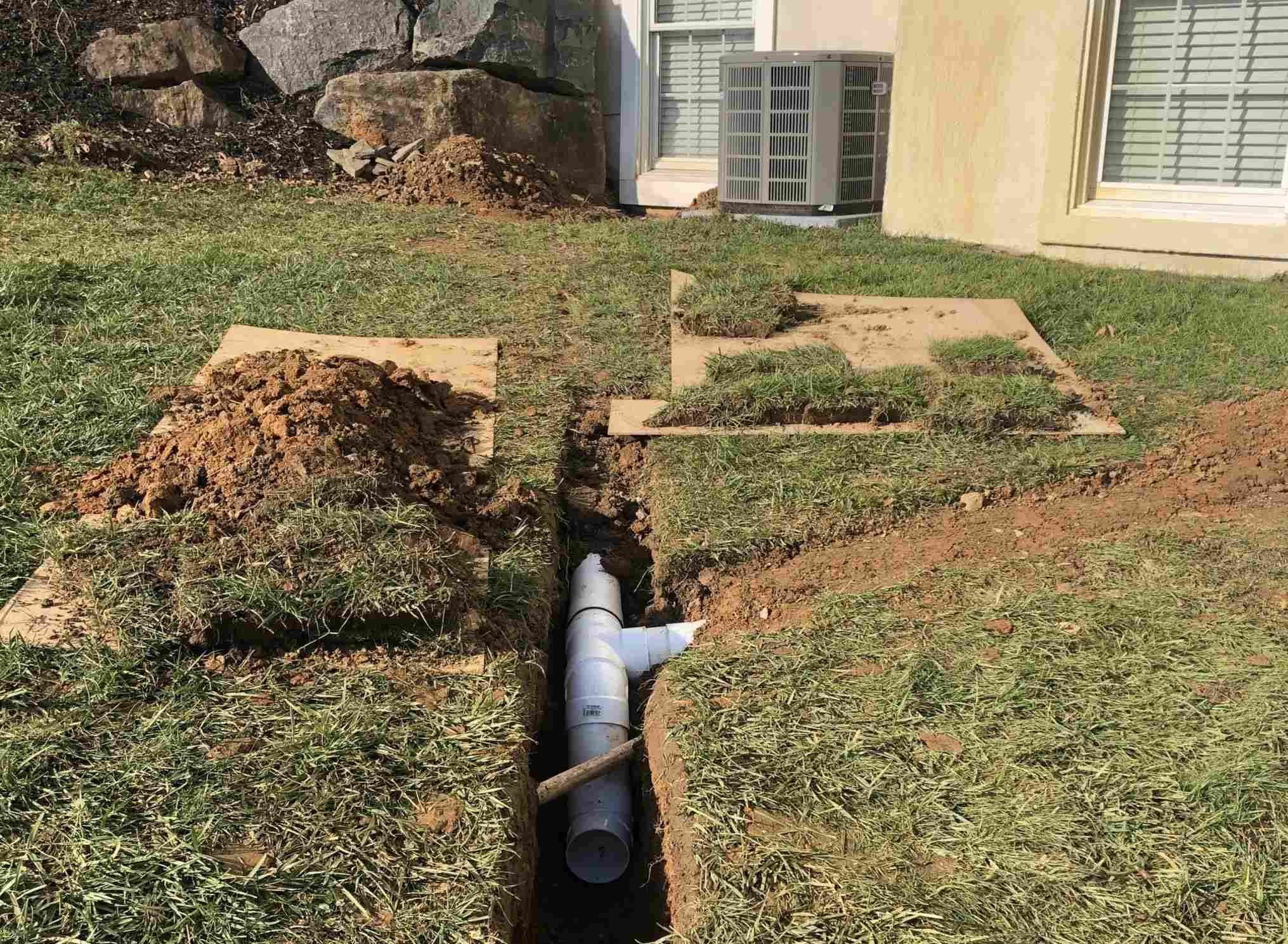Home>Gardening Techniques>DIY Projects>How To Make A Lazy River In Your Backyard


DIY Projects
How To Make A Lazy River In Your Backyard
Modified: January 22, 2024
Learn how to create a DIY lazy river in your backyard with our step-by-step guide. Transform your outdoor space into a relaxing oasis with this fun and exciting project.
(Many of the links in this article redirect to a specific reviewed product. Your purchase of these products through affiliate links helps to generate commission for Chicagolandgardening.com, at no extra cost. Learn more)
Table of Contents
- Introduction
- Planning and Designing your Lazy River
- Choosing the Right Location
- Marking the Path and Digging the Trench
- Lining the Trench with a Waterproof Barrier
- Installing the Pump and Filtration System
- Adding Water and Testing for Leaks
- Creating a Landscaped Bank for the Lazy River
- Adding Rocks and Decorations
- Installing Safety Features
- Enjoying Your Lazy River
- Conclusion
Introduction
Welcome to the world of DIY projects! If you’re looking to add a unique and exciting feature to your backyard, why not consider building a lazy river? Imagine floating along a gentle current, basking in the sun, and enjoying the serenity of your own personal oasis. Creating a lazy river in your backyard may sound like a complex task, but with the right planning and resources, it’s an achievable project that can provide years of enjoyment for you, your family, and friends.
A lazy river is essentially a slow-moving waterway that mimics the natural flow of a river. It can be designed to meander through your backyard, creating a peaceful and relaxing atmosphere. Not only does it provide a refreshing escape from the summer heat, but it also adds value to your property and becomes a focal point for entertainment and relaxation. Whether you’re hosting pool parties or simply unwinding after a long day, having a lazy river is sure to elevate your outdoor experience to a whole new level.
In this comprehensive guide, we will walk you through the step-by-step process of building your very own lazy river. From planning and designing to installation and landscaping, we’ll cover every aspect to ensure your project is a success. You don’t need to be an expert in construction or plumbing to tackle this DIY project. With some basic tools, materials, and a bit of determination, you’ll be on your way to creating your own personal paradise.
So, let’s dive in and explore the world of lazy rivers. Get ready to turn your backyard into a haven of relaxation and adventure!
Planning and Designing your Lazy River
Before you can start digging and building your lazy river, it’s important to invest some time in the planning and design phase. This will help ensure that your lazy river not only meets your expectations but also fits seamlessly into your backyard’s landscape. Here are some key considerations:
- Available Space: Assess the available space in your backyard and determine how much of it you’re willing to dedicate to the lazy river. Consider factors like access to sunlight, existing structures, and the overall layout of your outdoor area.
- Shape and Path: Decide on the shape and path of your lazy river. You can opt for gentle curves, straight sections, or even incorporate different levels of elevation. Visualize how the lazy river will flow and how it will interact with other elements in your backyard, such as a pool or patio.
- Materials and Budget: Determine the materials you’ll use for construction and establish a budget. The materials can range from concrete to rubber liners, depending on your preferences and budget constraints.
- Permitting and Regulations: Research local building codes and regulations to ensure compliance. Depending on your location, you may need to obtain permits before starting construction. This is especially important if your lazy river requires excavation or alterations to the landscape.
- Water Source: Consider the source of water for your lazy river. It can be filled manually using a garden hose or connected to your existing pool or water system. Assessing water availability and accessibility will help determine the feasibility and practicality of your project.
Once you have a clear vision of what you want, it’s helpful to sketch out a blueprint or use computer-aided design (CAD) software to visualize the final product. This will give you a better sense of the scale and the overall look and feel of your lazy river.
Remember, the planning and design phase is crucial in ensuring a successful and enjoyable outcome. Take your time to consider all aspects and make any necessary adjustments before moving forward with the next steps.
Choosing the Right Location
Choosing the right location for your lazy river is key to creating a seamless and enjoyable experience. Whether you have a large or small backyard, there are a few important factors to consider when selecting the perfect spot:
- Available Space: Assess the available space in your backyard and determine where the lazy river can fit without overcrowding or encroaching on other areas. Keep in mind that you’ll need sufficient room not only for the length and width of the lazy river but also for the banks and landscaping around it.
- Access and Visibility: Consider how easily accessible the location will be for you and your guests. Ensure that there is a clear pathway leading to the lazy river and that it’s easily visible from various points in your backyard. This will enhance the overall aesthetics and functionality of the lazy river.
- Sun Exposure: Evaluate the amount of sunlight the location receives throughout the day. While some sunlight is essential for a comfortable and enjoyable experience, too much direct sunlight can result in overheating and discomfort. Aim for a balance of shade and sunlight when choosing the location.
- Privacy: Take into account the level of privacy the location offers. If you prefer a more secluded and intimate experience, consider placing the lazy river in an area that is shielded from neighboring properties or public view.
- Utility Connections: Check for the presence of utility connections, such as water and electricity, nearby. This will significantly impact the ease of installation and operation of the lazy river. If the location is far from utility connections, additional planning and costs may be involved.
Once you have identified potential locations based on these considerations, take some time to walk around your backyard and envision how the lazy river will fit into the overall landscape. Consider the current landscaping and whether any modifications will be necessary to accommodate the lazy river.
Choosing the right location for your lazy river will ensure that it seamlessly integrates into your backyard and provides an optimal experience for you and your guests. Take the time to carefully evaluate your options and consider consulting with a professional if needed.
Marking the Path and Digging the Trench
Now that you have chosen the perfect location for your lazy river, it’s time to start marking the path and digging the trench. This step is crucial as it will define the shape and depth of your lazy river. Follow these steps to ensure a successful excavation:
- Measure and Mark: Start by measuring the length and width of your desired lazy river path. Use stakes and string to mark the edges of the trench. It’s important to maintain consistent width and depth throughout the entire length to ensure a smooth flow of water.
- Excavation: Begin digging the trench following the marked path. You can use a shovel, pickaxe, or an excavator, depending on the size of your lazy river. Remove the topsoil and continue digging to the desired depth. Keep in mind that the trench should be deep enough for comfortable floating but not too deep to pose safety concerns.
- Slope and Gradient: To create the gentle current for your lazy river, ensure that the trench has a slight slope. This can be achieved by gradually increasing the depth from one end to the other. Aim for a gradient of 1-2 inches per 10 feet of length, or as per your preference.
- Smooth and Level Bottom: Ensure that the bottom of the trench is smooth and level. Remove any rocks, roots, or debris that may obstruct the flow of water or cause discomfort when floating.
- Check Measurements: Periodically check the width, depth, and slope of your trench as you dig. Adjust as needed to maintain consistency and prevent any potential issues during the installation process.
As you excavate, it’s important to take necessary safety precautions. Wear appropriate protective gear and be mindful of any underground utilities or obstacles that may be present.
Once you have completed the excavation, step back and admire your work. You should now have a clear, defined path for your lazy river. The next step is to line the trench with a waterproof barrier to prevent leakage and ensure a smooth flow of water.
Lining the Trench with a Waterproof Barrier
After excavating the trench for your lazy river, the next step is to line it with a waterproof barrier. This is crucial to prevent leakage and ensure a smooth flow of water. Follow these steps to successfully line your lazy river trench:
- Clean and Prepare: Before installing the waterproof barrier, make sure the trench is clean and free of any debris. Remove any sharp objects or rocks that could potentially puncture the barrier.
- Choose your Barrier Material: There are several options for waterproof barriers, such as PVC liners, rubber liners, or even concrete. Each material has its advantages and considerations. PVC liners are commonly used as they are durable, flexible, and easy to install. Rubber liners provide excellent durability and are resistant to UV rays and punctures.
- Measure and Cut: Measure the length and width of your lazy river trench and cut the chosen barrier material accordingly. Add a few extra inches to ensure complete coverage.
- Position and Secure: Carefully place the cut barrier material into the trench, ensuring it covers the entire bottom and sides. Smooth out any wrinkles or folds. Depending on the material used, you may need to secure the edges by using heavy-duty tape, adhesive, or by burying them beneath the surrounding soil.
- Seal and Test: Check for any gaps or holes in the barrier and seal them using an appropriate waterproof sealant. Allow the sealant to dry completely before proceeding. Next, fill the trench with water to test for any leaks. If any leaks are detected, identify the source and make the necessary repairs.
It’s worth noting that the size and shape of your lazy river will determine the complexity of lining the trench. If you’re unsure about the process or feel overwhelmed, consider consulting with a professional who can guide you through the specific requirements of your project.
Lining the trench with a waterproof barrier is a critical step to ensure the longevity and functionality of your lazy river. Once the barrier is securely in place, it’s time to move on to the next phase – installing the pump and filtration system.
Installing the Pump and Filtration System
An integral part of your lazy river project is installing the pump and filtration system, which will ensure a continuous flow of clean and filtered water. Follow these steps to successfully install the pump and filtration system:
- Determine Pump Size and Capacity: Calculate the water flow rate needed for your lazy river based on its length, width, and desired current. This will help determine the size and capacity of the pump required to achieve the desired water flow.
- Select the Right Filtration System: Choose a filtration system that is appropriate for your lazy river’s size and intended use. Consider factors such as the type of filter (sand, cartridge, or diatomaceous earth), pump compatibility, and the capacity to handle the expected water volume.
- Set up the Pump and Filtration System: Install the pump and filtration system according to the manufacturer’s instructions. This typically involves connecting the pump to the filtration system, ensuring proper alignment and fittings. If necessary, consult a professional to ensure correct installation.
- Plumb the System: Connect the plumbing components, including pipes, valves, and fittings, to create a closed-loop system. Properly sized pipes and correctly placed valves will ensure a smooth flow of water throughout the lazy river.
- Test the System: Fill the lazy river with water and turn on the pump to test the system. Check for any leaks, unusual noises, or weak water flow. Adjust the pump speed and filter settings as needed to achieve the desired current and water clarity.
- Maintain the System: Regularly inspect and maintain the pump and filtration system to ensure its efficiency and longevity. Clean or replace filters as recommended by the manufacturer. Monitor water quality and adjust chemical levels, such as chlorine or pH, to keep the water safe and clear.
Proper installation and maintenance of the pump and filtration system are crucial for the optimal functioning of your lazy river. Consult the user manuals or seek professional advice to ensure a correct setup and ongoing care of the system.
With the pump and filtration system in place, your lazy river is now ready to be filled with water and tested for any potential leaks. In the next section, we will explore how to add water and conduct a thorough leak test for your lazy river.
Adding Water and Testing for Leaks
Now that you have installed the pump and filtration system for your lazy river, it’s time to add water and test for any potential leaks. Follow these steps to ensure a successful and leak-free experience:
- Fill the Lazy River: Start by filling the lazy river with water. Use a garden hose or connect it to your existing water source. As the water fills the trench, carefully monitor the depth and flow to prevent any overflow or damage to the surrounding area.
- Check for Leaks: Once the lazy river is filled, carefully inspect the entire length and perimeter for any signs of leaks. Look for dripping water, wet spots, or any unusual areas where water seems to be escaping. Pay extra attention to the connections, plumbing, and areas where the liner meets the edges.
- Addressing Leaks: If you discover any leaks, identify the source and take necessary actions to address them promptly. Depending on the size and location of the leak, you may need to patch it with a suitable waterproof material or make adjustments to the tubing, fittings, or liner. It’s important to resolve leaks before proceeding to the next steps.
- Conduct a Leak Test: Once you have addressed any leaks, conduct a thorough leak test by running the pump and observing the lazy river for an extended period. Look out for any new signs of leakage or water loss. It’s recommended to perform this test for several hours or even overnight to ensure that the lazy river remains watertight.
- Monitor Water Levels: Keep an eye on the water levels during the leak test. If you notice any significant drop in water levels, it may indicate hidden leaks that require further investigation and repair.
- Make Necessary Adjustments: If you discover any additional leaks during the test, address them as soon as possible. It’s crucial to achieve a leak-free system before proceeding with further steps of your lazy river project.
Testing for leaks is an essential part of ensuring the functionality and longevity of your lazy river. Take your time and be thorough in the process to avoid any future water loss or damage. Once you are confident that your lazy river is leak-free, you can move on to creating a landscaped bank and adding decorative elements to enhance its visual appeal.
Creating a Landscaped Bank for the Lazy River
Creating a beautifully landscaped bank for your lazy river is the next step in enhancing the overall aesthetics and charm of your backyard oasis. Follow these steps to create an inviting and visually appealing environment around your lazy river:
- Clear the Area: Start by clearing the area around the lazy river bank. Remove any weeds, rocks, or debris that may hinder the landscaping process. Trim any overhanging branches or shrubs that could obstruct the view or pose a safety hazard.
- Design the Bank: Consider the overall theme and style you want to achieve for your lazy river landscaping. Decide on the plants, flowers, and other elements you want to incorporate. Aim for a design that complements the natural surroundings and provides a cohesive look.
- Add Plants and Vegetation: Choose a mix of plants, shrubs, and trees that thrive in your local climate and fit the desired aesthetic. Opt for plants that are low-maintenance, drought-resistant, and can withstand occasional splashes of water. Consider using a combination of native species and ornamental plants to add color and texture to the bank.
- Create a Pathway: If you want easy access to the lazy river, consider creating a pathway alongside the bank. Use materials such as gravel, stepping stones, or wooden planks to create a functional and visually pleasing pathway for walking or lounging.
- Add Decorative Elements: Enhance the aesthetics of the bank by adding decorative elements such as rocks, boulders, sculptures, or other outdoor artwork. These elements can create focal points and add a unique touch to the overall ambience of the lazy river.
- Install Lighting: Install suitable outdoor lighting to accentuate the lazy river and its surroundings. Consider installing pathway lights, spotlights, or string lights to create a warm and inviting atmosphere during evening gatherings or nighttime enjoyment.
- Maintain and Prune Regularly: Regularly maintain and prune the plants and vegetation along the bank. Remove any dead or overgrown foliage to keep the area looking neat and tidy. Pay attention to the specific care requirements of each plant to ensure their proper growth and longevity.
By creating a meticulously landscaped bank, you can transform your lazy river into a picturesque and serene retreat. Take your time to plan and execute the landscaping design, focusing on elements that will enhance the visual appeal and blend harmoniously with the natural surroundings of your backyard.
With the bank beautifully landscaped, it’s time to add the finishing touches to your lazy river by incorporating rocks, decorations, and safety features.
Adding Rocks and Decorations
Adding rocks and decorations to your lazy river will further enhance its visual appeal and create a more immersive and natural experience. Here are some ideas to consider when adding rocks and decorations:
- Select the Right Rocks: Choose rocks that fit the aesthetic of your lazy river and blend well with the surrounding landscape. You can opt for river rocks, boulders, or natural stones. Consider the size, shape, and color variations to create an authentic and visually interesting look.
- Place Rocks Strategically: Arrange the rocks strategically along the bank of the lazy river. Consider using larger rocks as anchor points or to create natural stepping stones. Use smaller rocks to fill in gaps or to create a visually pleasing touch to the overall design.
- Create Water Features: Incorporate water features using rocks to enhance the tranquility and soothing atmosphere of your lazy river. You can create small cascades or waterfalls by arranging rocks in a step-like formation along the bank. Ensure proper water flow and adjust the rocks as needed to achieve the desired effect.
- Add Floating Decorations: Consider adding floating decorations such as water lilies, floating plants, or decorative pool floats to create a whimsical and playful atmosphere. These decorations can add a pop of color and further enhance the overall ambience of the lazy river.
- Include Natural Elements: Integrate natural elements such as driftwood, branches, or foliage into your lazy river design. These elements can add a touch of authenticity and create a more organic and inviting environment.
- Install Safety Signage: Prioritize safety by installing signage that highlights the depth, rules, and any potential hazards of your lazy river. Ensure that the signage is clearly visible to all users to promote a safe and enjoyable experience.
- Consider Theme and Personalization: Customize the rocks and decorations to fit a specific theme or to reflect your personal style. For example, you can create a tropical paradise with palm tree decorations and vibrant colored rocks, or go for a more Zen-like atmosphere with smooth pebbles and minimalist decorations.
Remember to consider the overall balance and cohesion of your design when adding rocks and decorations. The aim is to create a harmonious and inviting environment that complements the lazy river and elevates your outdoor space.
With rocks and decorations in place, you can now focus on installing safety features to ensure a worry-free and secure experience in your lazy river.
Installing Safety Features
When creating your lazy river, it’s essential to prioritize the safety of everyone who will be enjoying the experience. Installing proper safety features will help ensure a worry-free and secure environment. Here are some safety considerations to keep in mind:
- Fencing and Barriers: Install a fence or barrier around the perimeter of your lazy river to prevent unauthorized access and provide an extra layer of safety. Choose a sturdy and durable material, such as wrought iron or vinyl, that is resistant to weathering and can withstand outdoor conditions.
- Clear and Visible Signage: Place clear and visible signage near your lazy river to remind users of essential safety guidelines. This can include rules regarding diving, running, or the use of personal flotation devices. Make sure the signage is easy to read and strategically placed to catch the attention of users.
- Non-Slip Surfaces: Ensure that the walking surfaces around the lazy river, including the pathways and surrounding areas, are slip-resistant. Use materials such as textured concrete, composite decking, or non-slip coatings to minimize the risk of accidents, especially when water is splashing and causing wet surfaces.
- Depth Markers: Install depth markers at various locations along the lazy river to indicate the water depth. This will help users gauge the depth and ensure they are aware of any shallow or deep areas. Place depth markers at regular intervals, especially near entry and exit points, and where the water depth changes.
- Secure Safety Covers: If your lazy river has any access points, such as skimmer boxes or drain covers, ensure they are securely installed and compliant with safety regulations. Use appropriate covers or grates that prevent entrapment and meet the necessary standards.
- Supervision and Adult Presence: Enforce adequate adult supervision, especially when children or inexperienced swimmers are using the lazy river. Never allow unsupervised use, and ensure responsible adults are present at all times to oversee the activities taking place.
- Regular Maintenance and Inspections: Perform regular maintenance and inspections of the lazy river, including the pump, filtration system, and safety features. Check for any signs of wear and tear, loose hardware, or damaged components. Address any issues promptly to maintain a safe environment.
It’s crucial to remain vigilant about safety and take necessary precautions to avoid accidents or injuries in and around your lazy river. Educate users about the importance of adhering to safety guidelines and encourage responsible behavior at all times.
With safety features in place, it’s time to enjoy and make the most of your beautifully constructed lazy river. In the next section, we’ll conclude this guide with some tips on how to fully enjoy your lazy river experience.
Enjoying Your Lazy River
Now that your lazy river is complete, it’s time to sit back, relax, and fully enjoy the unique experience it provides. Here are some tips to make the most of your lazy river:
- Float and Relax: Grab a floatation device, lay back, and let the gentle current carry you along. Take in the serene surroundings, unwind, and enjoy the tranquility of your personal oasis.
- Create an Ambiance: Set the mood by playing some soothing music or installing outdoor speakers along the lazy river. Create a playlist that matches the vibe you want to achieve, whether it’s lively and energetic or calm and serene.
- Host Gatherings and Parties: Invite family and friends over for unforgettable gatherings and pool parties. Your lazy river will be the highlight of any event, providing entertainment and a unique experience for everyone.
- Enjoy Evening Delights: Extend your lazy river enjoyment into the evening by adding soft lighting around the bank and pathway. This creates a magical ambiance and allows you to enjoy the lazy river under the stars.
- Organize Theme Nights: Spice up your lazy river experience by having theme nights. From tropical luaus to movie nights on the water, incorporate fun themes that add an extra element of entertainment and excitement.
- Keep it Clean: Regularly clean and maintain your lazy river to ensure optimal water quality and clarity. Skim the surface for any debris, clean the filters, and monitor the water balance to provide a pleasant and hygienic experience.
- Take Safety Precautions: While the lazy river is meant for relaxation and enjoyment, always prioritize safety. Enforce and remind users to follow the established safety guidelines and provide supervision, especially for children and inexperienced swimmers.
- Capture the Memories: Take photos and create lasting memories of your lazy river experience. From family moments to special occasions, document the joy and fun shared in and around your personal paradise.
Your lazy river is not just a special addition to your backyard but also a space for relaxation, connection, and memorable moments. Appreciate the effort and hard work you put into creating this amazing feature and embrace the enjoyment it offers.
With these tips in mind, get ready to embark on countless hours of pure bliss and create wonderful memories that will last a lifetime.
Conclusion
Congratulations on successfully building your very own lazy river! From the planning and design phase to the installation of the pump and filtration system, you’ve dedicated time and effort into creating a backyard oasis that offers relaxation, entertainment, and a unique experience for you, your family, and friends.
By carefully considering the location, marking the path, and digging the trench, you were able to create the foundation for your lazy river. Lining the trench with a waterproof barrier ensured a leak-free environment, while the installation of the pump and filtration system provided a continuous flow of clean water. Adding rocks, decorations, and safety features contributed to both the aesthetics and safety of the lazy river.
Now it’s time to fully embrace the joy and tranquility of your lazy river. Whether it’s floating peacefully, hosting gatherings and parties, or simply unwinding after a long day, your lazy river will undoubtedly become a cherished asset in your backyard.
Remember to maintain the upkeep of your lazy river by regularly cleaning and inspecting the system, ensuring water clarity, and adhering to safety guidelines. Additionally, continue to explore new ways to enhance your lazy river experience, such as themed nights or adding additional decorations.
Enjoy the moments, create lasting memories, and share the bliss of your personal paradise with your loved ones. Your DIY lazy river is a testament to your creativity, determination, and love for outdoor living. So jump in, relax, and soak up the splendor of your very own lazy river!

